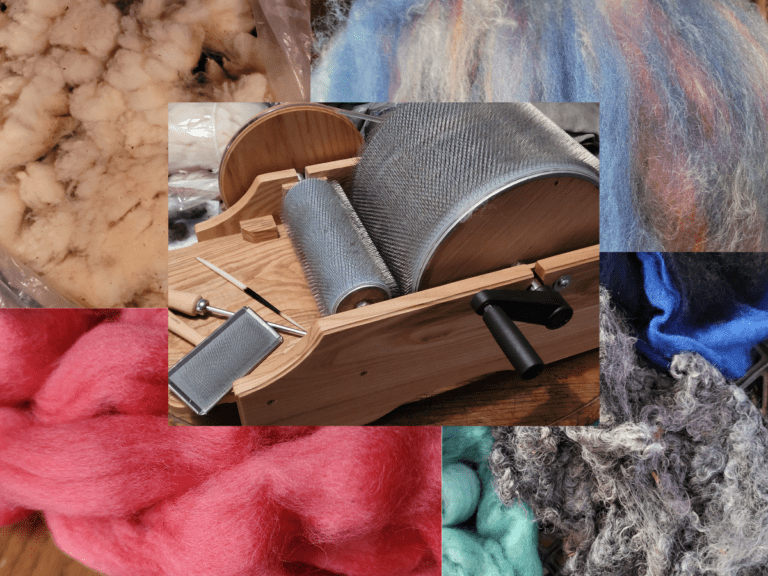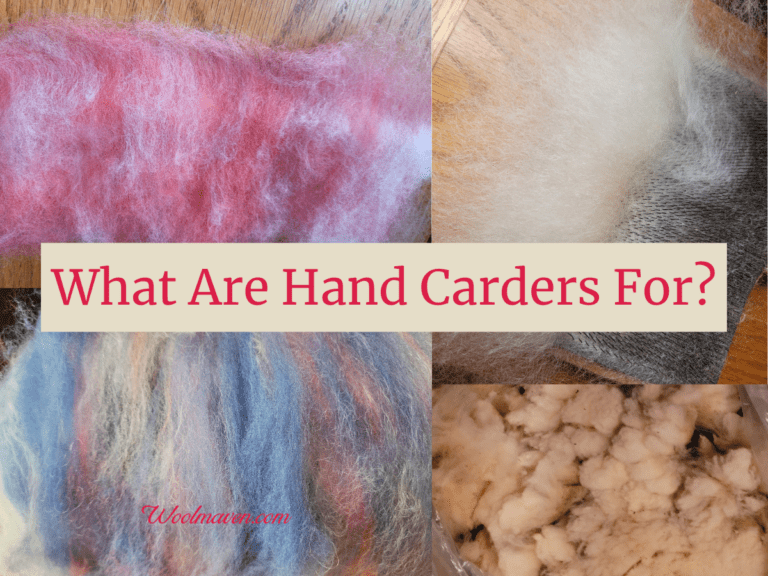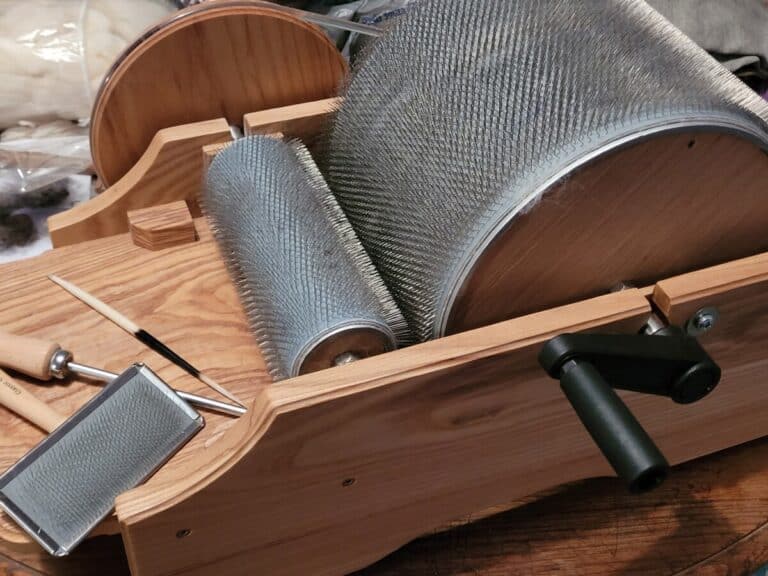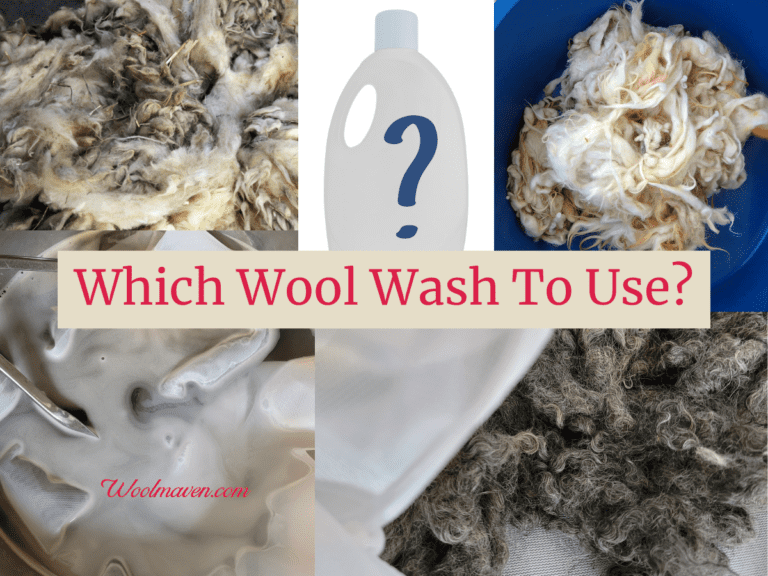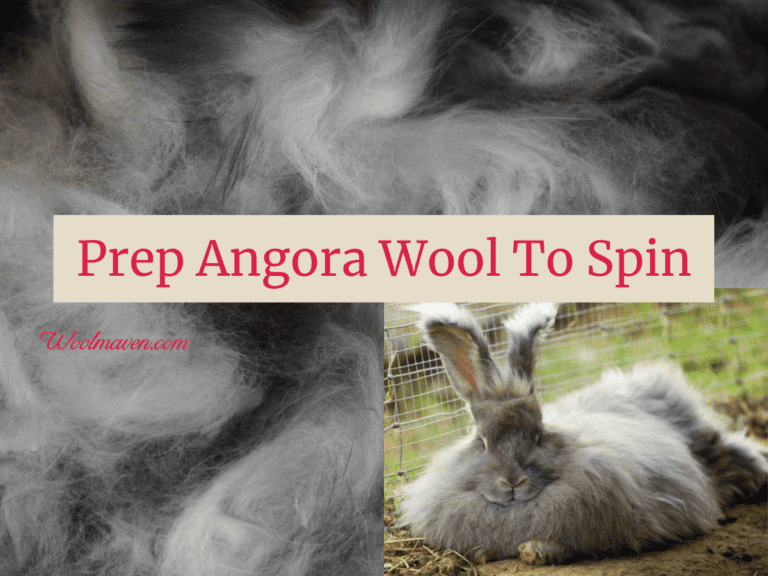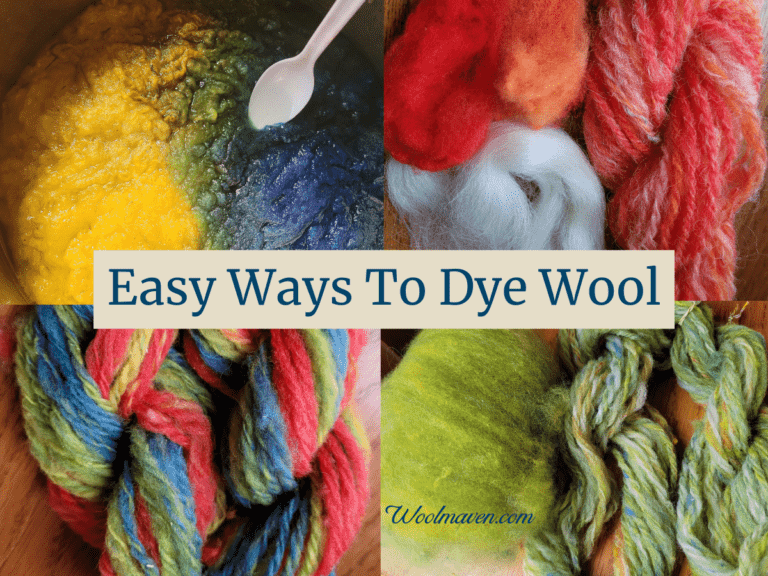Do You Need To Wash Wool Before Spinning?
There are a lot of lovely handspinning fleeces available online, at fiber festivals and maybe even from your own sheep. With all of those choices, it’s hard to pick!
Then, you stop and think, yikes, what happens when I get that fleece home? How do I know if I have to wash the wool before spinning it?
Wool does not need to be washed before spinning if it the locks easily separate into individual fibers and it is reasonably clean, free of debris and low in grease. Washing the wool before spinning is best for high grease fleeces, fleeces with a noticeable amount of dirt or debris and wool that needs well carded or combed before spinning.
New to sourcing your own wool fleeces? Consider reading How To Pick The Best Wool To Spin For Your Project, it will help start your handspinning off right!
You do not need to wash wool before spinning
You do not need to wash your wool before spinning it! You can wash it, if you prefer to used clean wool, but spinning “in the grease” is fine, too!
Really the determiner of if you wash wool or not is if you prefer to use washed wool and how much grease (lanolin) is naturally in the fleece.
Most medium and longer stapled wools that are reasonably clean can be spun raw or washed, it’s your choice.
Most fine wools will probably need to be washed before spinning, due to higher grease content.
How To Get Raw Wool Ready For Spinning In The Grease shows you how to get your fleece ready for spinning without washing.
This post contains affiliate links, which means I receive commissions if you choose to purchase through links I provide (at no extra cost to you).
Prepared fiber is pre washed
If you are using prepared fiber, meaning combed top, roving or dyed fleece, it has already been washed for you before it was combed, carded or dyed.
The most commonly available wools, like the bags of wool you get from the spinning shops are normally combed top.
Combed top has been well washed, carded then combed, so it is ready to use straight out of the bag.
Check out The Woolery for ready to spin fiber, even the dyed options are good to go for immediate spinning. I buy all of my bulk, ready to use fiber here.
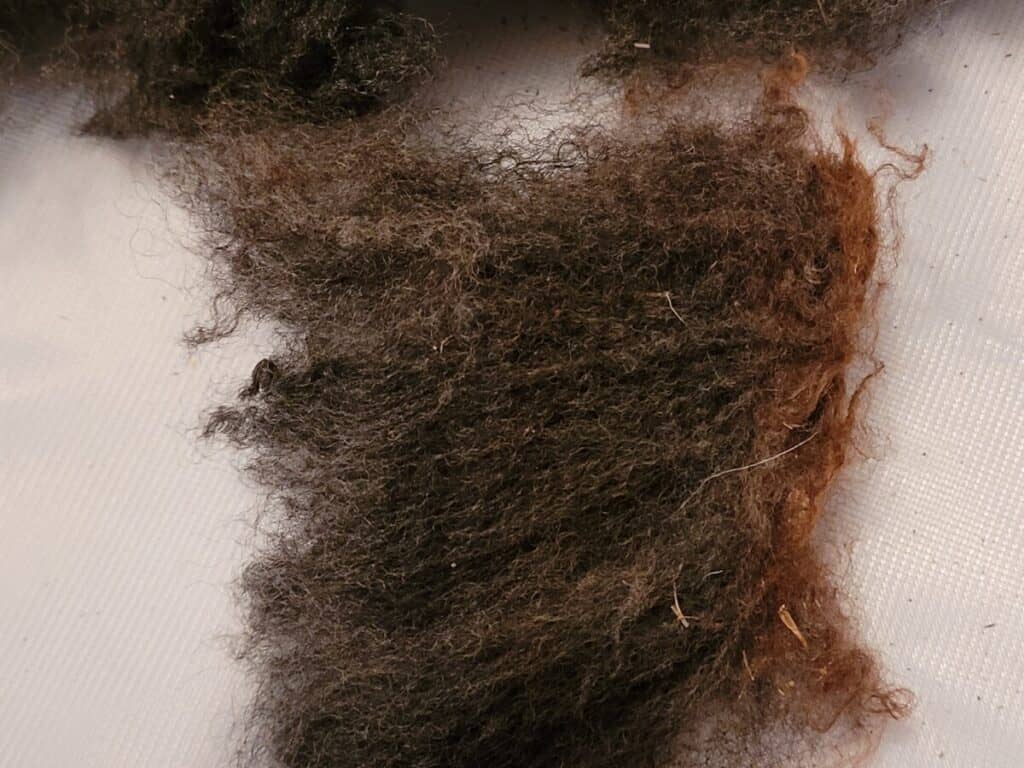
Set your criteria for spinning in the grease
Consider having a list of criteria to check to see if a fleece is acceptable for you to use unwashed.
You will need to have a bit of experience to know for yourself what you like and what you don’t like to work with.
That means, at first, you’ll just have to give spinning unwashed wool a try and see how it goes.
For me, I have a mental checklist of things that a wool needs for me to like spinning it raw. The catch here is this is my checklist, not necessarily yours!
Here are some of the things that I want in a wool in order to consider spinning it in the grease:
- little to no VM (vegetable matter) that I can see
- low grease
- medium length
- easily separated locks
- reasonably clean
- do not plan to dye before spinning
- shorn within the past year
You’ll have to set your own limits here.
For instance how much VM? Usually, there is some in the wool, but if I can easily see it without poking around, that’s probably too much for me.
Or what is low grease? If I can see the grease in the locks of wool (it looks yellow) then it’s too much. If I can just feel a little of it when I spin, that’s fine with me.
Wash the wool if it did not meet your criteria
If the wool you looked at and spun a bit of did not meet your criteria for being used unwashed, now you’ll need to change your approach.
You have a few options: use another fleece, lower your standards, suint soak the wool or scour the wool.
To be upfront, it’s not hard to wash wool, so unless you are being ultra picky, don’t lower your standards or move to a different fleece!
You can do a normal wash, with hot water and a fiber cleaning detergent, which is called scouring.
Scouring will leave the wool clean, no grease or dirt left in the fiber.
Unicorn Power Scour is the wool wash I use on raw fleece. Occasionally, I also use a drop or two for wet setting yarn.
If the wool has stains, like urine stains, those are unlikely to come out.
The stained fibers will get clean, but not white, so plan to dye these bits or put them out for the birds.
How To Raw Wash Wool will give you the steps to wash your wool. Don’t worry, it’s fairly easy and mostly hands off/waiting time!
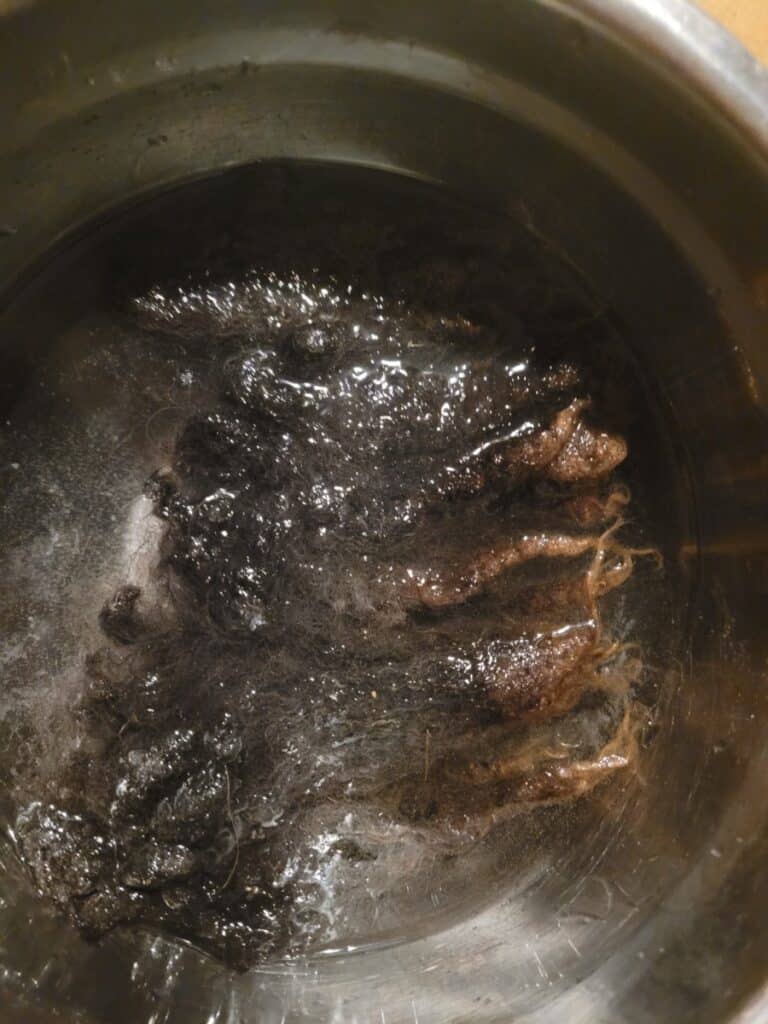
Suint soak rather than scour
If your wool is close to usable, but not quite, consider a suint soak, rather than a full scour.
A suint soak is an overnight soak in lukewarm water that will loosen up the dirt that is in the wool but leave the grease intact.
This is super easy, just soak the wool overnight then dry it and try spinning it again.
If the soak doesn’t give you what you need, now you’ll need to move to an actual scour to remove the grease with the fiber wash.
Suint soaking my wool
I have used a suint soak very successfully for the fleece from our black ewe.
I tried spinning right off the fleece (I like to spin raw wool) but couldn’t get the yarn I was hoping for, so I had to poke around and see what else would work.
This is such a pretty fleece with light colored tips that are somewhat felted. I love the color, but was having a hard time working with the wool with those tips!
I tried carding it, but that just put the tips throughout the batt and I had to pick them out when I spun.
I was wasting a lot of the carded wool to pick out the tangled bits. The floor around my chair looked like a wool storm had just ended!
Then I tried flick carding the locks, to see if that would give me more spinnable fiber, which was hard on the flick card!
The other challenge with this fleece that I have not mentioned yet is that the length is almost too short for me, If it was white like the rest, I’d pass, but it’s not!
This is why I tried carding, to see if that would make it more workable despite almost too short staple.
Next I decided to suint soak a bit of the wool overnight to see if that would work.
This way the grease is still in the wool, but hopefully, the tips would be more workable.
The suint soak made a world of difference! The tips were still light colored and a bit tangled, but much looser and were easily flick carded and spun.
Suint soaking this fleece was a big win for me. I hate to wash if I don’t have to, so soaking was the ticket!
Classic Carder has a nice video and article going over Preparing Fleece, in which they suggest washing fleece without removing the lanolin, which is what I have listed above as a suint soak.


